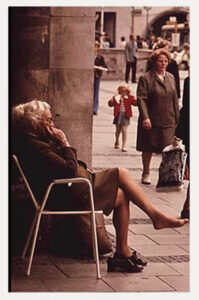Witches
Dayle in Limoux – Day # 69
September 12, 2022
Place du Vieux-Marche’, Old Market Square, where Joan of Arc was burned at the stake. Apparently, Joan’s body was burned three different times, and her burning was prolonged by the sadistic executioners to lengthen her pain and torture.
From The Guardian:
‘What is generally agreed is that Joan’s body was burnt three times by the English and ashes from the foot of the pyre were supposedly discovered in 1867, lurking in the Paris loft of an apothecary .
French scientists, who have been studying those ashes, confirmed (in 2006) that a piece of cloth found among the remains may have been a fragment of Joan of Arc’s gown. A new series of DNA tests of bones and tissue found among the ashes is expected to confirm that they belong to a female.
The most exciting discovery by his 18-strong team at the Hôpital Raymond Poincare near Paris was in the carbon-dating of the piece of cloth. ‘It is linen of high quality and we can confirm that it dates from the 15th century. It could have been a robe or a bag.’
According to historians, Joan of Arc was 19 when she was burnt at the stake in Rouen by the English on 30 May, 1431. She died of smoke inhalation. The Cardinal of Winchester is recorded as having ordered her to be burnt a second time. Her organs still survived this fire, so a third burning was ordered to destroy the body completely. Her cinders and debris were to be thrown into the Seine.
However, in 1867 ashes that were said to include remains of Joan of Arc were found in the Paris loft of an apothecary. These were transferred to a museum in Chinon where they are still kept.
I spent the entire morning at this sacred spot in the Old Market Square. I started at the Rouen Cafe, and then settled closer to where she was burned.
A massive crucifix is placed in the exact spot where Joan was burned alive. Reportedly, Joan asked to be able to see the cross as she was being executed. The last word she screamed was, “JESUS!”
(The bells of the cathedral are ringing now. Sometimes, not knowing the reason, they just ring and ring in these magnificent harmonies. So incredibly beautiful. Those deep, melodic, bellowing tones. Many bells surround the square. Inspiring. And to wake up with them in the morning, ethereal. This is first light today from my window…
Back to Joan. :)
This is the base of the giant crucifix, with the Joan of Arc church and her statue just behind.
And these are ancient stones from Joan of Arc’s time that were left in place at the Old Market Square.
Here’s the tree where I sat under for prayers and meditations this morning…I could see the crucifix through the branches.
So peaceful. Tranquil. It’s Monday, and after the many tourists left from the weekend, the locals were out and about on their bikes; on Mondays, many establishments are closed, I learned brokenheartedly. Still, able to see and explore so much.
When I finally pulled myself away from the Old Market Square, I trekked to find a historical monument where Johanne was tried and convicted, imprisoned, after being betrayed by her country and king, Charles the VII. Supposedly there’s this interactive virtual thing we can take part in, not typically my thing, yet, rave reviews. I found it! Sadly, one of the establishments that are closed on Mondays. Next time. I was able to linger awhile and take in the historic splendor, knowing Joan was there, her energy, her eloquence, your loyalty, and her truth. History shows her arguments were pure in logic, and forthright, often beleaguering the m e n trying to convict her. Their minds were made up, if not, she would have walked free.
Look at these ancient standing stones! Made up for the fact the historical establishment was closed. :) They are placed on each side of the door.
This is the courtyard right next to the historical site. Legal hearings? Council? Not sure.
And these are the two ancient plaques, explaining what transpired with Joan. After her execution, it is here Charles VII said, whoops, our bad. She was declared innocent. Sorry about the burning thing. And in 1920, of course centuries later, not unlike Mary Magdalene, her virtues and faith and historical contribution were recognized, and she was canonized as a saint.
From here, knocked out to learn that at the art museum in Rouen, there are three original paintings by Nicolas Poussin!
Poussin was actually from Normandy, and Rouen is the capitol of Normandy. There’s a statue of him outside the museum…
If you’re following the Dayle in Limoux posts, you know he painted ‘Et in Arcadia Ego’ which is based on the sacred geometry in Languedoc and Renne-les-Chateau…the Cathars.
This is a capture from 2019, visiting the site of the ‘tomb,’ no longer there because the owner of the property was tired of the visitors. He destroyed it. Tragically. This photo was taken in Languedoc, aligning with the sacred geometry.
Everything Sir Henry Lincoln wrote about with his co-authors in the book that started the intrigue all over again.
Here’s a couple of YouTube reviews.
Pousinn’s French Baroque style was also considered French Classical tradition. He was a major inspiration for such classically oriented artists as Jacques-Louis David, Jean-Auguste-Dominique Ingres, and Paul Cézanne.
This later version of Et in Arcadia Ego has a far more (sacred!) geometric composition, and the figures are much more contemplative. The mask-like face of the shepherdess echos the Classical “Greek profile”. And! It’s in the Louvre. Someday, when I get back to Paris. Can’t wait. If I lived in Paris, I would go the Louvre every weekend. I would!
From thegoodlifefrance.com:
Joan of Arc claimed to have communicated spiritually with saints at a rural location some two kilometres from her home. She identified them as Michael the Archangel, St. Catherine of Alexandria and St. Margaret of Antioch. The last two saints were virgin martyrs who had refused to take orders from men and, when leading the French army into battle, Joan dressed as a man to avoid prejudice. The spot is well marked. An extremely grand and prominent Basilica was built at the location as late as 1881. Masses are held there every Sunday and great mural artworks portraying her military capacity surround the walls. In the grounds around it, visitors will find impressive sculptures and statues of Joan, the saints that communicated with her and her pious father Jacques, who shaped her childhood. The Basilica is impressive, features a vast spire and can be seen from miles around amongst the local countryside.
Joan of Arc was captured in the city of Compiegne, Picardy at the start of May, 1430. She was held by the conspiring Burgundians who sold her to the English for 10,000 Francs.
Her trial took place in Rouen, the capital city of Normandy. She was convicted of witchcraft and heresy by the English and Burgundian authorities and sentenced to death by burning at the stake in the centre of Rouen on May 30th, 1431. The English executioners apparently went to much trouble to ensure that her death was as slow and distressing as possible. She was just nineteen years old. Twenty years later, a retrial took place in the same courtroom and found her innocent of all charges.
Her exact place of execution is marked by a vast concrete cross. Right next door rests a contemporary church to commemorate her. Digital son et lumiere dramatically presents features of Joan’s life on the face of the city’s Notre Dame Cathedral. The vast Excel walk round cinema on the banks of the Seine River flowing through Rouen, features a similar, stunning feature. The courtroom where she was tried twice, houses an ultra-modern, active digital museum that almost brings her back to life.
Joan of Arc was canonised in 1920 and is the patron saint of France. More than 20,000 books have been written about her. Her persuasion, untaught military skills and undoubted faith in her religious beliefs were extraordinary achievements by one who lived such a short life.
I was able to research and study the Poussin paintings for awhile with the complimentary WiFi in the museum; beautiful structure.
They have a hall dedicated to ‘Heroines,’ too. Many sculpture’s and paintings of Johanne. I’d like to have one of these, please.
And then, from here it was back to the Cathedral to sit in front of Joan of Arc’s chapel. I lit two candles, one each for my two children, William Henry, and Annie Glenn, to keep Joan’s fierce protection surrounding them, and her compassion guiding them.
Look at the light from the stained glass panel.
s
p
i
r
i
t
Some photos from today…captures…and the Cathedral…Rouen is beautiful, ancient medieval architecture with splashes of contemporary color.
Here comes the sun…see it right at the top?
The clock! From the 1300’s. It still rings at 9:00 at night to signify what was once, ‘curfew.’
And, at night. Tres jolie.
And then, preparation for the light and music show with the cathedral as the giant canvas…on the tallest cathedral in France…✧ * . * ✧ . * . *
. * . * . for the magic. . ✧ .
✧ ✧ * . * . . *. .
✧ * . . ✧ . * . *
This is the Rouen Cathedral of Notre Dame. This year the light and music show runs June 3rd to September 17th. It’s spectacular. Folks say it’s a ‘must-see summer event.’ No doubt. It shares the story of Joan of Arc and the Viking history.
Here’s about 13 minutes someone posted on youtube from this summer. The presentation is about 50 minutes in total. I wish everyone could see it. Incredibly inspirational. We need lots of inspiration on our planet right now. Tell the stories, share the history. Feel what is possible. Thanks be to those who create these beautiful messages when we need them most. Love watching the younger spirits, enthralled, wondering how they will be inspired, what they too will create, sowing those tiny seeds of promise and possibility.
b
e
l
i
e
v
e
https://youtu.be/JFq26L0m5ek
J’adore Rouen. Find the light.
Bonne nuit!
Dayle in Limoux – Day #67
September 11, 2022R
O
U
E
N
F R A N C E
Jeanne d’Arc
Early train from Limoux to Carcassonne to make the connection to Marseilles and then on to Rouen, France, where Joan of Arc was tried and convicted, betrayed by her king and her country, and burned at the stake for being a heretic, that is, a w i t c h. The guys also didn’t like the fact that she wore armor and men’s clothing, which she donned, especially when in prison, to protect herself against sexual assault. (There’s a new play in London called ‘I, Joan’ about a gender non-conforming hero who uses them/they pronouns. It’s playing at Shakespeare’s Globe. Hard pass. I revere her history, and this isn’t it. She is sacred. Leave her be.)
Very long day of train travel to get to Rouen, which I loved. Train travel is the best; and it’s so doable in this country. And not very expensive. Taking the bus is basically a euro in the region of Languedoc.
Waiting for the train in Limoux.
Waiting for the train in Carcassonne.
And the bread of life.
Pain au chocolate. ღ
The Mediterranean heading into Marseilles, where Mary Magdalene landed in Gaul (France) to begin her apostleship to the villagers in the region. (Read, ‘The Manuscript!’)
Marseilles found my stress threshold. B i g station. Had no idea what I was doing; our train was delayed in Carcassonne which put us late into the station. I couldn’t find the right platform, or a screen to tell me which platform it should be. I had 15 minutes to figure it out. A woman with a child was asking people for €’s, as I was hurrying past I gave her the 4 €’s I had in my pocket. Then she started following me. She wanted 10. Impressive. I finally found the platform with minutes to spare…and lots of perspiration.
Another great thing about France, they even grow trees inside.



The first thing I saw when I disembarked from the train…
I have no idea what it is, no markings…I just love it. So old. And the air smelled like flowers. Seriously! It really did. So fresh. Maybe because I was finally able to remove my mask after five hours. :)
[Train station in Rouen.]
When the taxi dropped me at my hotel, I thought I was in a fever dream.
WHAT. IS. HAPPENING.
The Cathédrale Notre-Dame de Rouen was awash in bright colors and pulsating music. It was incredible. My hotel is right across from the Cathedral. So when it was over, I grabbed my bag to go check in. Door locked with a note in English. I think for me. Finally the proprietor comes downstairs to inform me the hotel is overbooked…staff error…and found me another hotel. Drag. So tired. So, I trekked to find it. Got lost. A sweet young Norwegian couple who spoke English (!), helped me find it. It’s a trip. I can only possibly explain it by suggesting you think 60’s, Batman, Pop Tarts, and Bowling.
Oh, and fluorescent orange and blue lighting. The whole night feels like a fever dream. Toto, we’re not in Limoux anymore. Only have to stay one night and then I can return back to the Hotel Cardinal for the rest of my stay.
On the way to find the other hotel found this tower/obelisk structure…ancient…no markings…and not really cared for. It almost looks like it was burnt at one time.
And the full la lune in Rouen. Here’s what Power Path has to say about this month’s full corn/harvest moon.
This is a good window to focus on spiritual and emotional wellness, what that means to you, and how you can better support it in your life. Any spiritual searching and intention in this area will bring good results. This is also a time for gratitude for what is ending or changing in your life. Completions can be powerful catalysts for driving much needed resets. If a recent crisis has opened up the field of flexibility and creative problem solving, see it as a gift instead of an obstacle.
Almost full before I left Limoux.
Tomorrow, exploring!
I traveled to Rouen to be with Joan. I had thought about this journey so much while still in the states. I so wanted to be here, and here I am! I had hoped to visit the town where she was born and where she first heard the voices instructing her what she needed to do for France; she was only 13/14. The town is called Domrémy-la-Pucelleyet, it’s another five hours and about five transfers. Very remote. I think another time. Folks can visit the church where she worshiped, as well as the home where she lived.
She was only 19 when tried, convicted, and burnt at the stake as a heretic, or as the men liked to call women they didn’t like (and still do), a witch.
I read Mark Twain’s book about Joan of Arc while deep in our COVID isolation, so surprised to learn he had written about her.
It’s excellent. Deep research and reverence for her passion and loyalty for France and her king. Johanne listened to the guidance of her angel spirits, Archangel Michael, Saint Margaret, and Saint Catherine of Alexandria. (St. Catherine of favorite of mine, too.)
Twain wrote:
“It furnished me seven times the pleasure afforded me by any of the others; twelve years of preparation, and two years of writing.”
[https://www.worldcat.org]
[https://www.gender.ed.ac.uk/witches-of-scotland-a-campaign-to-right-the-historic-wrongs-done-to-women/]
More on witches about an original text:
The Malleus Maleficarum, first published in 1486–7, is the standard medieval text on witchcraft and it remained in print throughout the early modern period. Its descriptions of the evil acts of witches and the ways to exterminate them continue to contribute to our knowledge of early modern law, religion and society. Mackay’s highly acclaimed translation, based on his extensive research and detailed analysis of the Latin text, is the only complete English version available, and the most reliable. Now available in a single volume, this key text is at last accessible to students and scholars of medieval history and literature. With detailed explanatory notes and a guide to further reading, this volume offers a unique insight into the fifteenth-century mind and its sense of sin, punishment and retribution.
Found a great short podcast about the thousands of women who were persecuted, tortured and killed after being accused of witchcraft. The Scottish Parliament is set to clear their names. The host, Annette Young, meets the two women who are behind the campaign to get Scottish authorities to pardon the accused.
“At a time when women were not even allowed to speak as witnesses in a courtroom, they were accused and killed because they were poor, different, vulnerable, or in many cases just because they were women … I extend a formal, posthumour apology to all those accused, convicted, vilified or executed under the Witchcraft Act of 1563.”
On the 9th of March 2022, First Minister of Scotland Nicola Sturgeon formally apologised for the persecution of people accused of witchcraft in Scotland, calling it an “injustice on a collosal scale.” The persecution started in the 1500s and lasted over two centuries, during which nearly 4,000 – the vast majority of whom were women – were accused of witchcraft. And this same brutality caused tens of thousands to be persecuted and murdered in Languedoc in the 11th and 12 centuries.
FRANCE 24
Exorcising the ills of the past: Scotland set to vote on pardoning ‘witches.’
https://podcasts.apple.com/us/podcast/the-51/id1055024600?i=1000578178243
Plus demain! (More tomorrow.)  __________________________________________________________________________________________________________
__________________________________________________________________________________________________________
Religion and politics…equally corrupt.
May 22, 2022“There is nothing more tragic in the modern world than the misuse of power and action to which men are driven by their own Faustian misunderstandings and misapprehensions. We have more power at our disposal today than we have ever had, and yet we are more alienated and estranged from the ground of meaning and of love than we have ever been.
-Thomas Merton
Contemplation in a World of Action, 1965
‘…you will see that (we) move almost automatically into a pattern of up or down, in our out, for me or against me, right or wrong, black or white, gay or straight, good or bad. It is the basic reason why the “stinkin’ thinkin'” of racism, sexism, classism, homophobia, religious imperialism, and prejudice of all kinds is so hard to overcome and has lasted so long…’
[…]
‘Neuroscience now makes very clear that humans deeply love predictability and fear all unpredictability, which encourages us to make all kinds of absolute affirmations, especially about fearful or dangerous things…’
[…]
‘Our religion is not working well: suffering, fear, violence, injustice, greed, and meaninglessness still abound. This is not even close to the reign of God that Jesus taught. And we must be frank: in their behavior and impact upon the world, Christians are not much different than other people. — Christianity is now seen as “irrelevant” by some, “toxic” by many, and often as a large part of the problem rather than any kind of solution. Some of us are almost embarrassed to say we are Christian because of the negative images that word conjures in others’ minds. Young people especially are turned off by how judgmental, exclusionary, impractical, and ineffective Christian culture seems to be. — We must rediscover what St. Francis of Assisi (1182–1226) called the “marrow of the Gospel.” It’s time to rebuild from the bottom up. If the foundation is not solid and sure, everything we try to build on top of it is weak and ineffective. Perhaps it’s a blessing in disguise that so much is tumbling down around us. It’s time to begin again.’
-Fr Richard Rohr
“In a sense, Christians have always lived a different epistemological existence than nonbelievers. But this is something new.”
An expose on Evangelical Christianity leaning into civil war written by Tim Alberta, the chief political correspondent for Politico. His piece was recently published in The Atlantic.
“More than a few times, I’ve heard casual talk of civil war inside places that purport to worship the Prince of Peace.”
Washington Post
‘Southern Baptist leaders covered up sex abuse, lied to members about secret database, explosive report shows
Leaders in the Southern Baptist Convention released a major third-party investigation that found that sex abuse survivors were often ignored, minimized and “even vilified” by top leaders in the nation’s largest Protestant denomination.
The findings of nearly 300 pages include shocking new details about specific abuse cases and shine a light on how denominational leaders for decades actively resisted calls for abuse prevention and reform. They also lied to Southern Baptists over whether they could maintain a database of offenders to prevent more abuse when top leaders were secretly keeping a private list for years.
The report — the first investigation of its kind in a massive Protestant denomination like the SBC — is expected to send shock waves into a conservative Christian community that has had intense internal battles over how to handle sex abuse. The 13 million-member denomination, along with other religious institutions in the United States, has struggled with declining membership for the past 15 years. Its leaders have long resisted comparisons between its sexual abuse crisis and that of the Catholic Church, saying the total number of abuse cases among Southern Bapitists was small.’ [5.22.22]
‘Without the contemplative and converted mind, much religion is frankly dangerous for society.’ Fr Richard Rohr
We all will reach a moment when a voice inside says, “I can’t. It’s too difficult, too dark.” What if these moments were invitations to find another voice inside? The voice that says “You are brave.” The pain of transition is what precedes the beginning of something new. -Revolutionary Love
Dan Rather, journalist and author, “Steady” and the book What Unites Us:
‘As with all that we face, we can find resilience in recognizing the threat and calling it out. We should not let the abhorrent become acceptable. There can be pressure in persistence.
In resisting and organizing against the forces of division, we can secure our democracy in ways that could leave it stronger. The crises we face are not new. Turning back the tide, through the vote and the mobilization of action, can leave this country more just and better prepared for the challenges ahead.’
[Yoichi R. Okamoto, Munich’s Large and Beautiful Fussgangerzone (detail), 1973, photograph, Munich, Public Domain.]
S U R V I V A L S K I L L S
From writer and author Suleika Jaouad:
‘When I think of this, I think of my friend Quintin Jones—aka “Lil’ GQ,” if you’ve read my book [Between Two Kingdoms]. Quin survived a childhood difficult beyond measure, including poverty, abuse, mental illness, addiction, and living on the streets as a young teen. In his two decades on death row, he spent 23 hours a day in solitary confinement, and he could have folded in on himself, given up all sense of hope. Instead he reckoned with his past, sought forgiveness for his wrongs, and committed to becoming a light to others, building meaningful friendships from his cell with pen pals across the world, myself included.
To me, Quin is the embodiment of someone who was forced to plumb the depths of their strength and was continually uncovering new reserves. Here on the one-year anniversary of his execution, I’m resharing his prompt “Survival Skills,” which asks us to reflect on our strength—on our ability to endure.’ [5.22.22]
Ending with a story of light 
p
r
o
m
i
s
e
‘Scott goes back to high school.’
Addendum, May 23, 2022
Center for Action and Contemplation
Christianity’s Violence Problem
CAC teacher Brian McLaren has long asked questions out loud that many have often asked only to themselves. In his new book Do I Stay Christian?, Brian outlines compelling reasons both to leave and stay within Christianity. Today we share his critique of Christianity’s complicity with violence. Such truth-telling can be difficult to read. We invite you to practice the contemplative stance of “holding the tension of opposites”:
Echoing its founder’s nonviolence, the Christian faith initially grew as a nonviolent spiritual movement of counter-imperial values. It promoted love, not war. Its primal creed elevated solidarity, not oppression and exclusion [see Galatians 3:26–28]. . . . The early Christians elevated the equality of friendship rather than the supremacy of hierarchy (John 15:15; 3 John 14, 15).
This commitment to nonviolence rapidly eroded in the early fourth century when the emperor Constantine declared Christianity the religion of the empire. This led to an acceptance of violence and domination against the empire’s enemies, but also perceived “enemies” from within:
What the empire wanted to do, the church generally blessed. . . . This cozy relationship with empire continued long after the Roman Empire had fully collapsed. The church supported the empire’s many reincarnations in French, German, Spanish, Portuguese, Dutch, British, Russian, German, and American imperial ventures. Each empire could count on the mainstream Christian church to bless its successes, pardon its failures, and pacify and unify its masses.
A community with a history of violence to Jews . . . does not sound like a safe place for non-Christians. But as a chaplain to empire, Christianity was not a particularly safe place for Christians either—at least not those who chose to differ from the authorities of the church or state. Choosing to differ, in fact, was the root meaning of the word heresy. . . .
Historians generally agree: while the records are unreliable and incomplete, at least tens of thousands of suspected nonconformists were prosecuted by church courts between 1180 and 1450; many thousands were tortured; over a thousand were executed by church authorities. . . . In a seventy-year period starting in 1560, 80,000 women were tried as witches and 40,000 were killed. . . .
Today, abuse of Christians by Christians tends to be more emotional and spiritual than physical. But shunning and disowning (forms of relational banishment), public shaming and character assassination, private humiliations, church trials of nonconformists, blacklisting, and other forms of Christian-on-Christian cruelty continue, and more and more traumatized people are coming forward with their stories. . . .
To state the obvious: Jesus never tortured or killed or ruined the life of anyone, but the same cannot be said for the religion that claims to follow him.
Knowing what I now know, if I were not already a Christian, I would hesitate in becoming one, at least until the religion in all its major forms offers a fearless, searching, public moral accounting for its past crimes . . . first, against Jews, and also against its own nonconformist members.

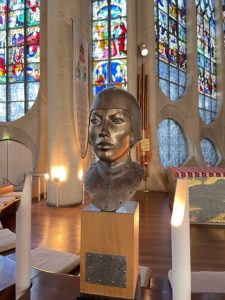
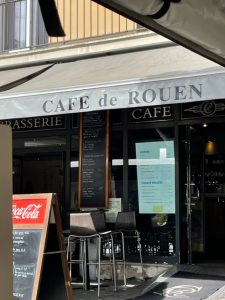

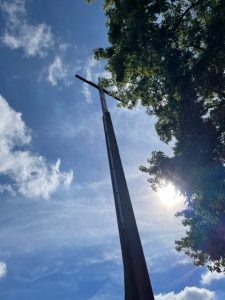
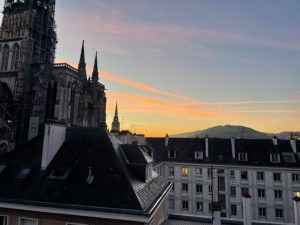
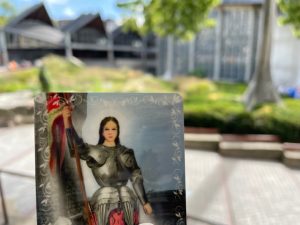
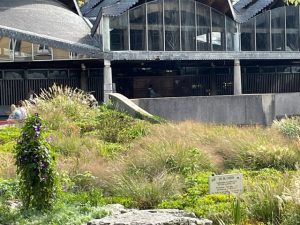


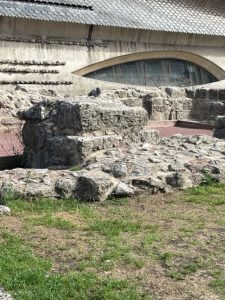
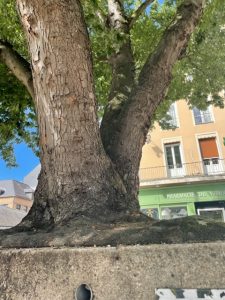
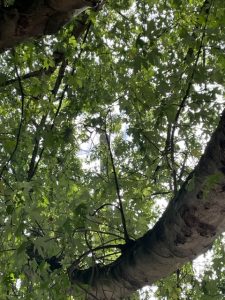

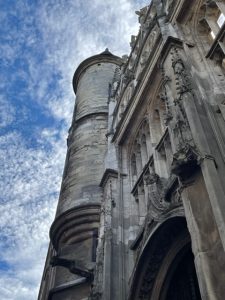
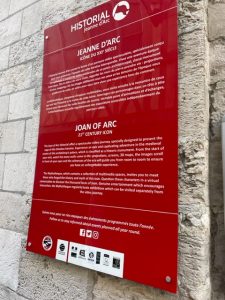


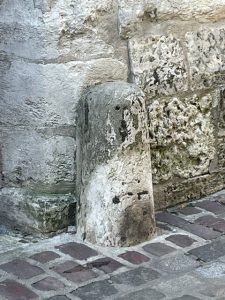

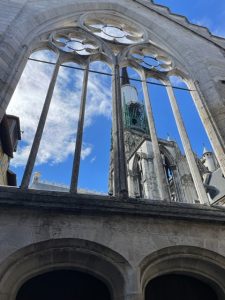
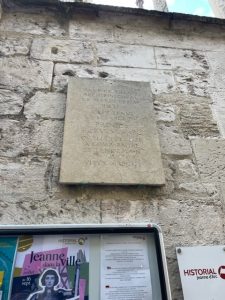
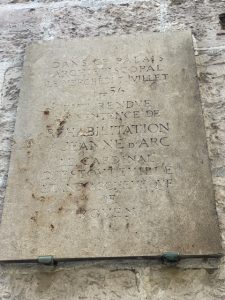

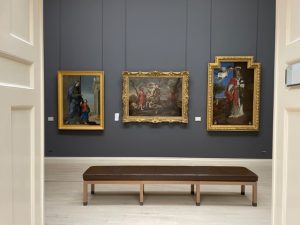
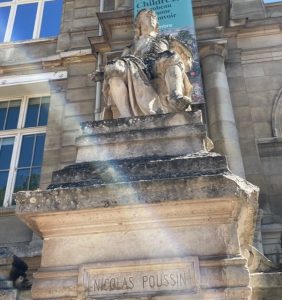
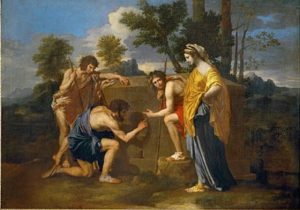

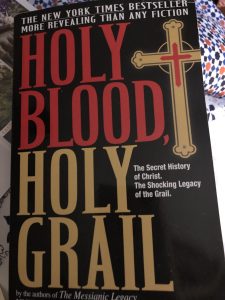
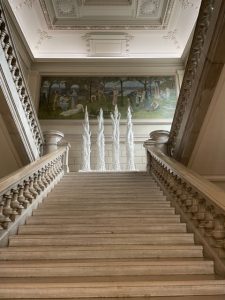
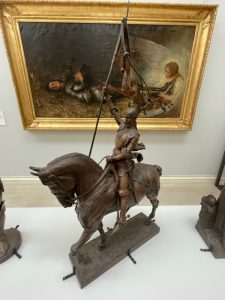
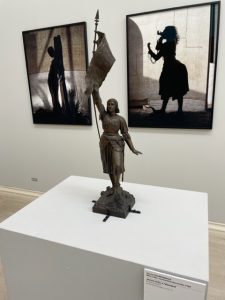



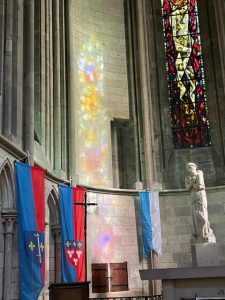
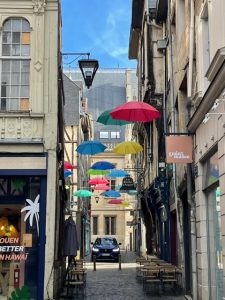
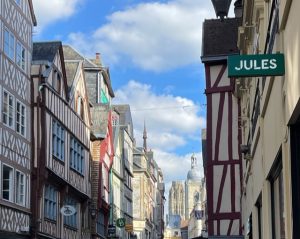
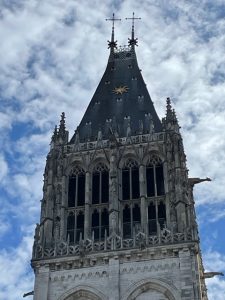



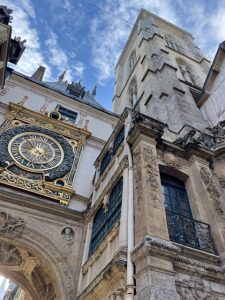
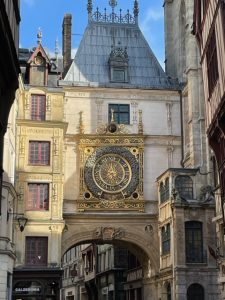

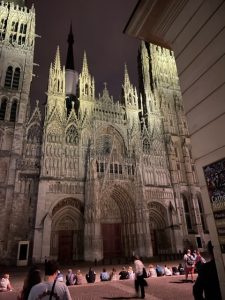

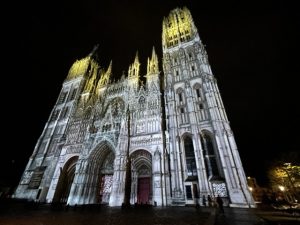
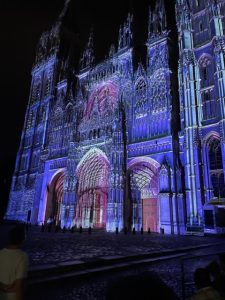
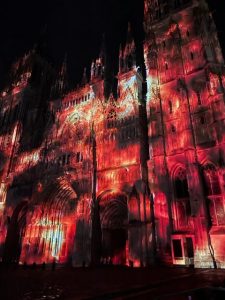
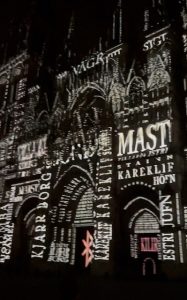



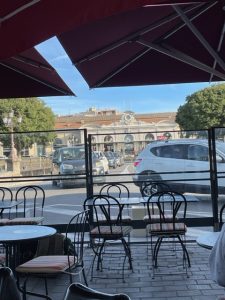
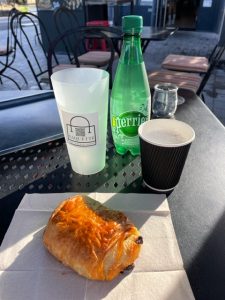
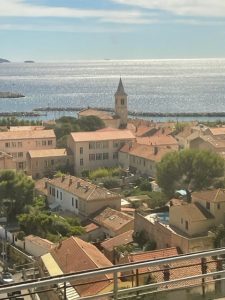



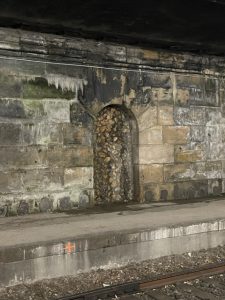

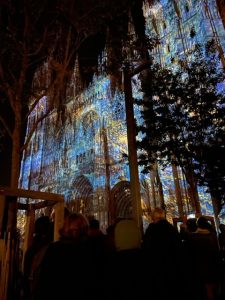


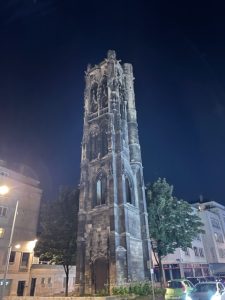
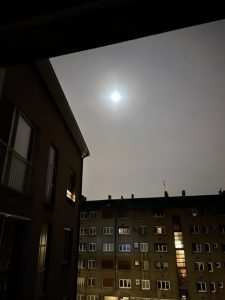
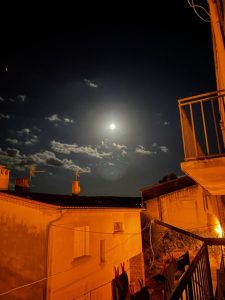



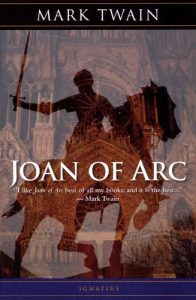
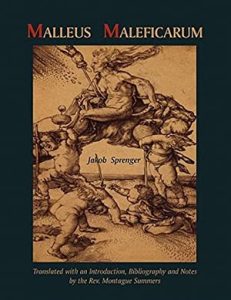
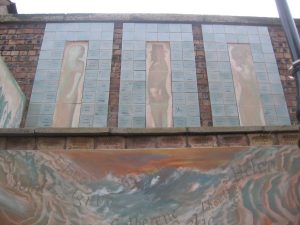

 “It should have been my mum.”
“It should have been my mum.”


